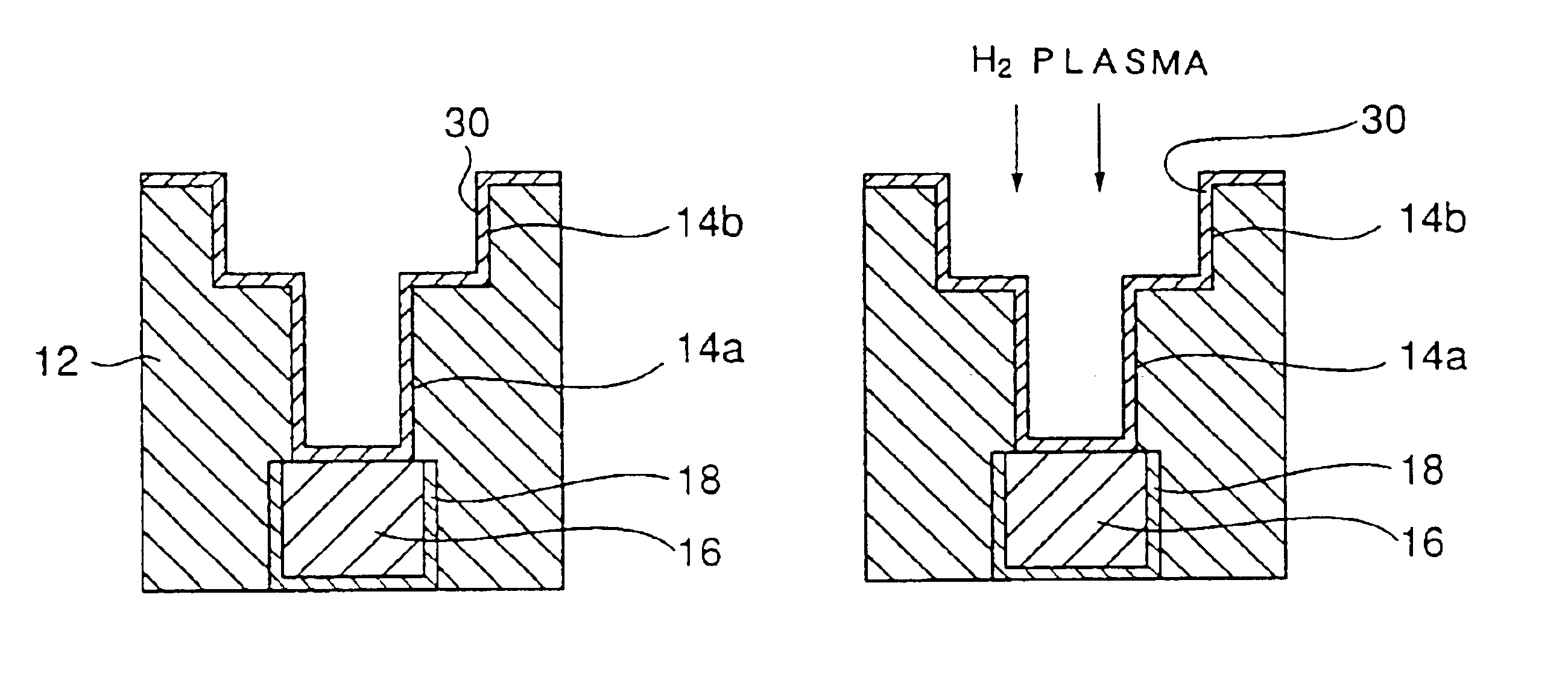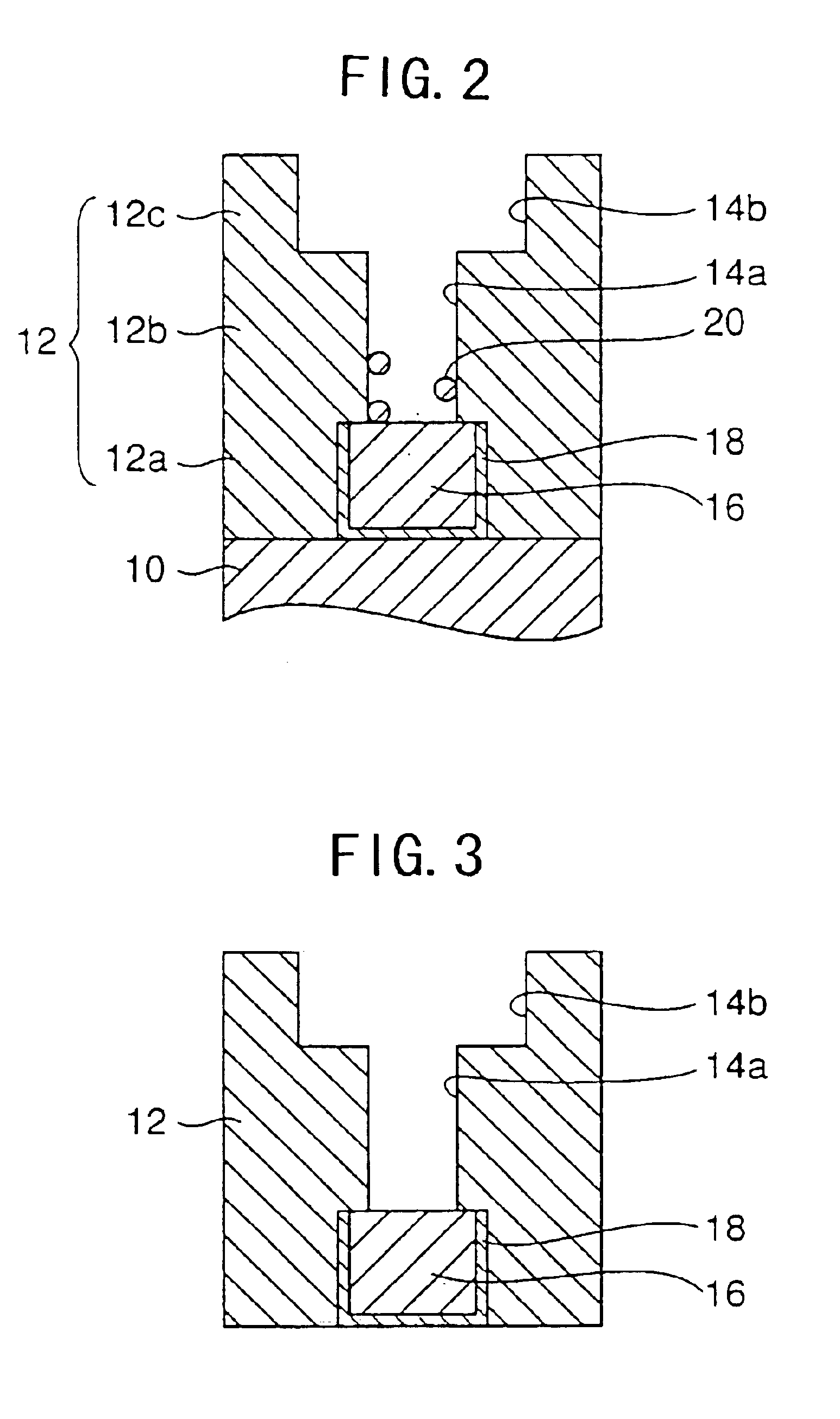Fabrication process of a semiconductor device including a CVD process of a metal film
a technology of metal film and fabrication process, which is applied in the direction of semiconductor/solid-state device details, chemical vapor deposition coating, coating, etc., can solve the problems of metal film peeling off, disconnection or short-circuit, poor adhesion between metal film and cvd process
- Summary
- Abstract
- Description
- Claims
- Application Information
AI Technical Summary
Benefits of technology
Problems solved by technology
Method used
Image
Examples
first embodiment
[First Embodiment]
[0035]Hereinafter, the fabrication process of a semiconductor device according to a first embodiment of the present invention will be described with reference to FIG. 1 showing a flowchart and FIGS. 2-9 showing a process flow of the fabrication process of the semiconductor device.
[0036]Referring to the flowchart of FIG. 1, the process starts with a step S1 in which a Si substrate 10 is covered by a plurality of insulating films 12a-12c consecutively as represented in FIG. 2, with intervening etching stopper films not illustrated. For the sake of simplicity, the insulating films 12a-12c are collectively designated by a reference numeral 12. In the step S1 corresponding to FIG. 2, a via hole 14a for a conductor plug and a groove 14b for an interconnection pattern are formed by an etching process. Thereby, the via hole 14a and the groove 14b form together a stepped structure in the cross-section of FIG. 2.
[0037]In the structure of FIG. 2, it should be noted that there...
second embodiment
[Second Embodiment]
[0047]Next, the semiconductor fabrication process according to a second embodiment of the present invention will be described with reference to FIG. 10 showing a flowchart and FIGS. 11-18 showing the process flow. In the drawings, those parts corresponding to the parts described previously are designated by the same reference numerals and the description thereof will be omitted.
[0048]Referring to FIG. 11 corresponding to the step S11 of FIG. 10, the via hole 14a for a conductor plug and the groove pattern 14b corresponding to an interconnection pattern are formed in the insulating film 12.
[0049]Next, in the step of FIG. 12 corresponding to the step S12 of FIG. 10, the via hole 14a and the groove 14b are subjected to a cleaning process.
[0050]Next, a barrier conductor layer 30 of WN is formed in the step of FIG. 13 corresponding to the step S13 of FIG. 10 such that the barrier conductor layer 30 covers the sidewalls of the via hole 14a and the groove 14b and further...
PUM
| Property | Measurement | Unit |
|---|---|---|
| Temperature | aaaaa | aaaaa |
| Temperature | aaaaa | aaaaa |
| Pressure | aaaaa | aaaaa |
Abstract
Description
Claims
Application Information
 Login to View More
Login to View More - R&D
- Intellectual Property
- Life Sciences
- Materials
- Tech Scout
- Unparalleled Data Quality
- Higher Quality Content
- 60% Fewer Hallucinations
Browse by: Latest US Patents, China's latest patents, Technical Efficacy Thesaurus, Application Domain, Technology Topic, Popular Technical Reports.
© 2025 PatSnap. All rights reserved.Legal|Privacy policy|Modern Slavery Act Transparency Statement|Sitemap|About US| Contact US: help@patsnap.com



